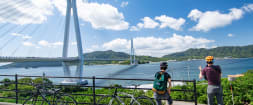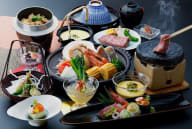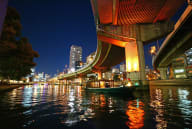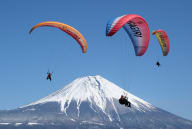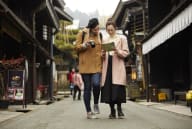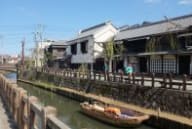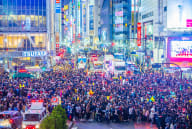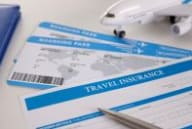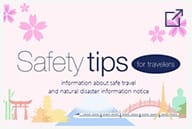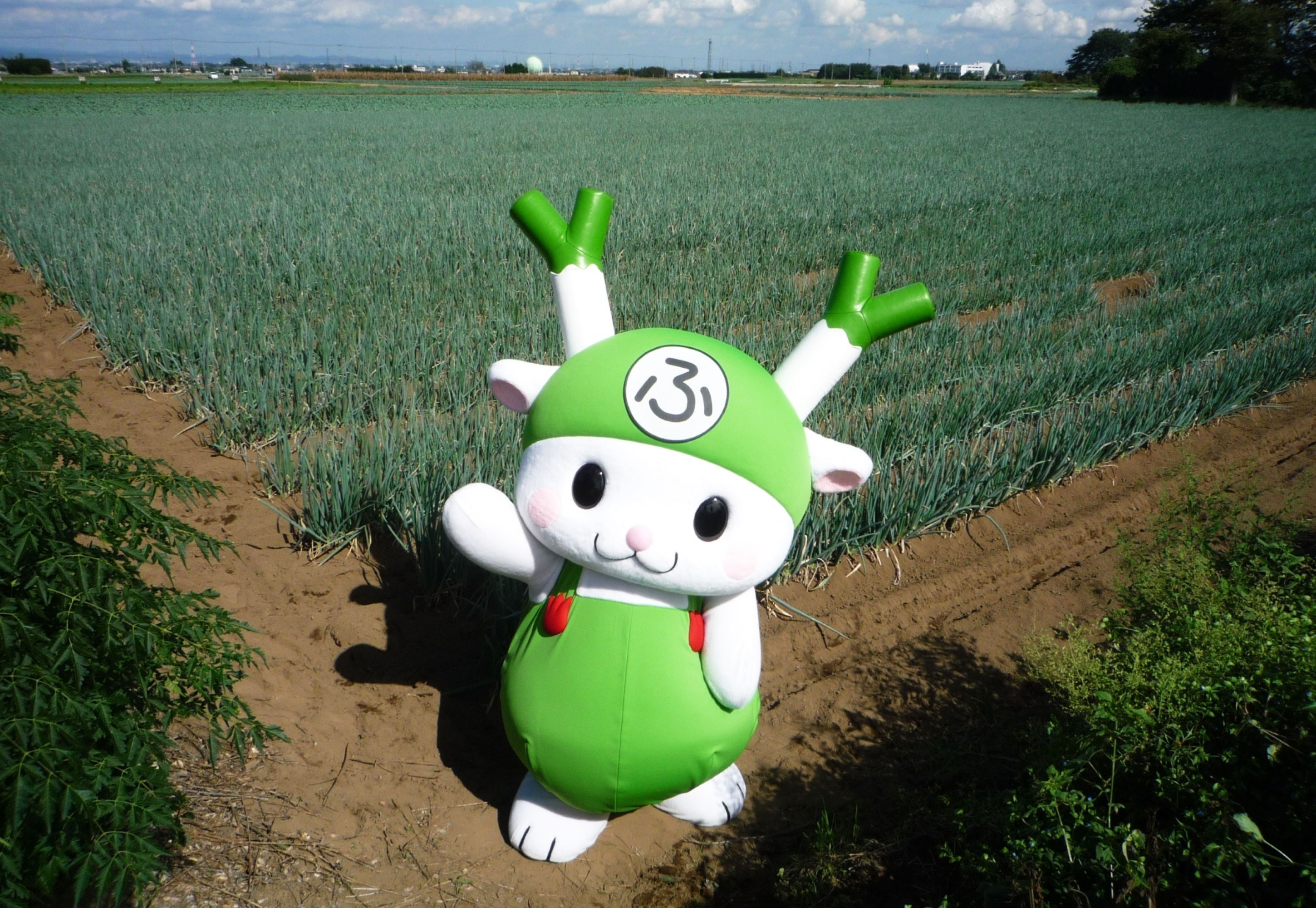Use the
Planning a Trip to Japan?
Share your travel photos with us by hashtagging your images with #visitjapanjp
Your guide to stress-free travel, from luggage forwarding services to public transportation etiquette
Traveling around Japan is a breeze thanks to the country’s outstanding public transportation network, which includes high-speed bullet trains (shinkansen), comfortable highway buses, and modern subways. Whether going from Tokyo to Tottori (western Japan) or Kyoto to Kinugawa Onsen (in Tochigi Prefecture), you can rely on the country’s public transport to get you there comfortably, conveniently, and on time.
As good as Japan’s public transportation is, however, observing a few small courtesies and knowing some simple travel hacks can make your journeys and those of others even smoother and more enjoyable. From luggage forwarding services to seat-reclining manners, learn how to travel Japan like a pro.
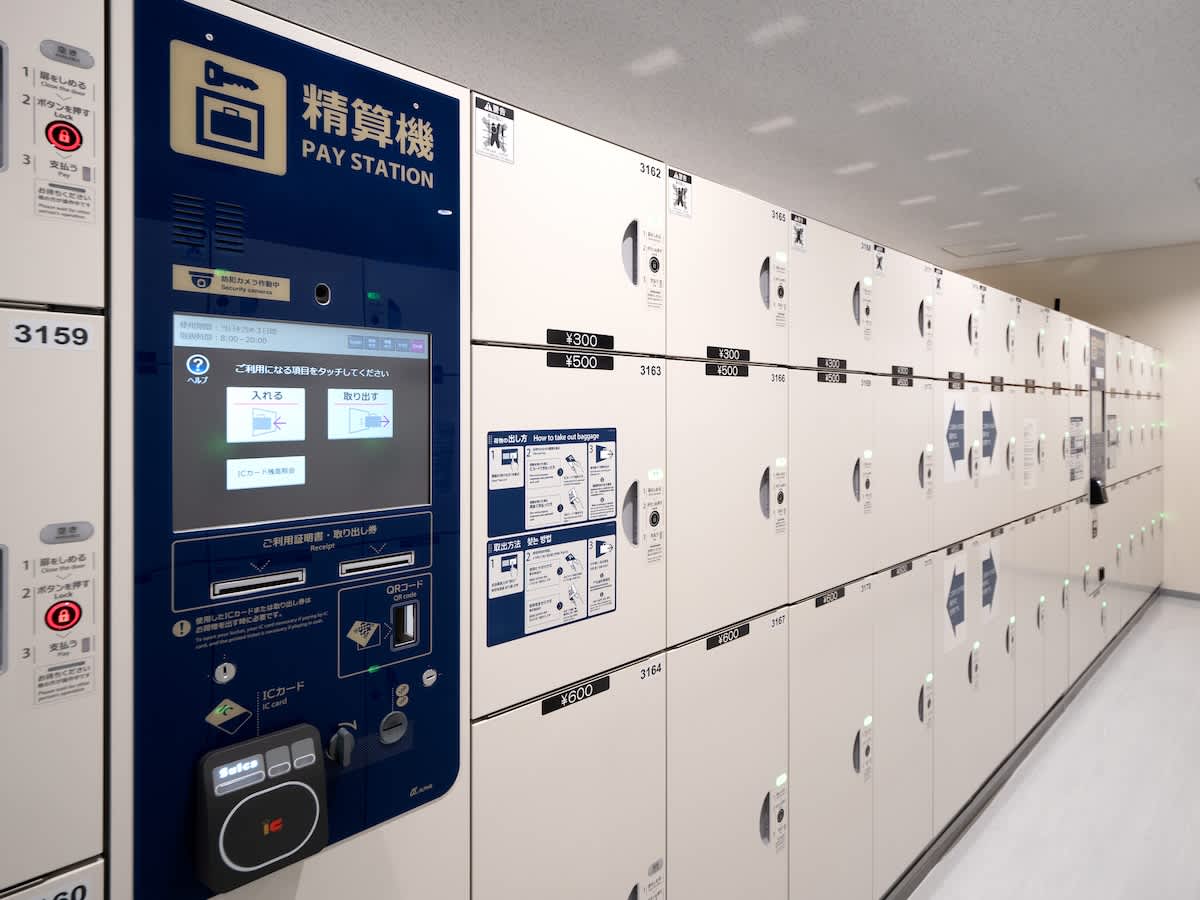
No luggage, no problem
Big suitcases and heavy bags can make the most exciting journeys stressful and tiring, not to mention the problems they can cause on crowded trains and buses. Traveling light is generally preferable, but it is not always easy. If you plan to travel with anything bigger than a carry-on suitcase, consider using the country’s affordable and reliable luggage forwarding services to go hands-free.
Courier services, known as "takuhaibin," allow you to send your luggage from one location to another—from your hotel to the airport or between cities. Many hotels can help guests have their bags sent to their next destination. It is typically as simple as filling out a delivery slip and leaving your bags at the front desk. Airports generally have designated kiosks where you can collect or send your suitcases. It is even possible to send luggage from convenience stores. It is worth noting that convenience stores typically have limited space for holding large bags, so some stores, especially those in the most popular sightseeing destinations, may temporarily suspend services or impose restrictions on luggage size and quantity.
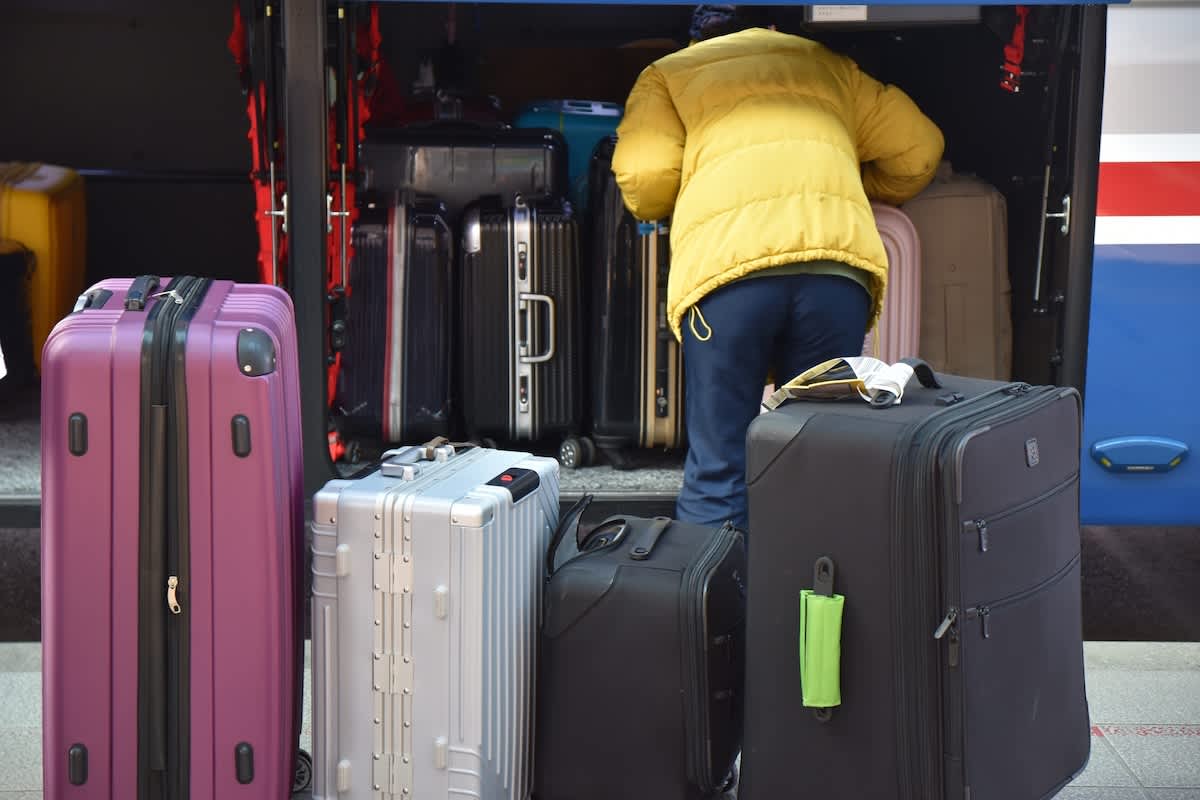
If you are unable to send your bags or need to keep them with you, make sure to check the luggage rules and restrictions of the transportation you plan to use. For example, some bullet train (shinkansen) services require passengers to reserve space for large baggage. Reservations can be made for free at ticket offices, some ticket vending machines, and online. Some other transportation options, such as ferries, airport buses, and highway buses, may also require reservations and/or may charge for large items or multiple bags.
When traveling within towns and cities, make the most of lockers and storage facilities to avoid having to lug your bags around while exploring. Most train and bus stations have lockers. There are also some apps to reserve baggage storage at affiliated shops and businesses. If you do need to take your luggage with you, show consideration for pedestrians and other passengers by:
- Avoiding rush hours
- Taking taxis
- Avoiding wheeling suitcases along busy shopping streets and streets with narrow sidewalks
- Keeping a secure hold of luggage so it does not fall or roll into other people
- Not blocking doorways, exits, aisles, etc.
Find out more information about luggage delivery services and storage on the Luggage & Storage and Travel Around Japan Luggage-Free pages of this website.
Travel etiquette
Some of the most common things visitors remark upon in Japan include the cleanliness of the streets, the politeness of people, and the punctuality of public transport. Much of what makes the country such an attractive destination is fostered by unspoken customs and manners that essentially boil down to mutual respect and consideration.
When traveling on public transport, there are some things to be aware of to avoid causing “meiwaku,” an intrinsic concept in Japanese culture which refers to any form of behavior that disrupts social harmony. Many are universal, but some may be surprising.
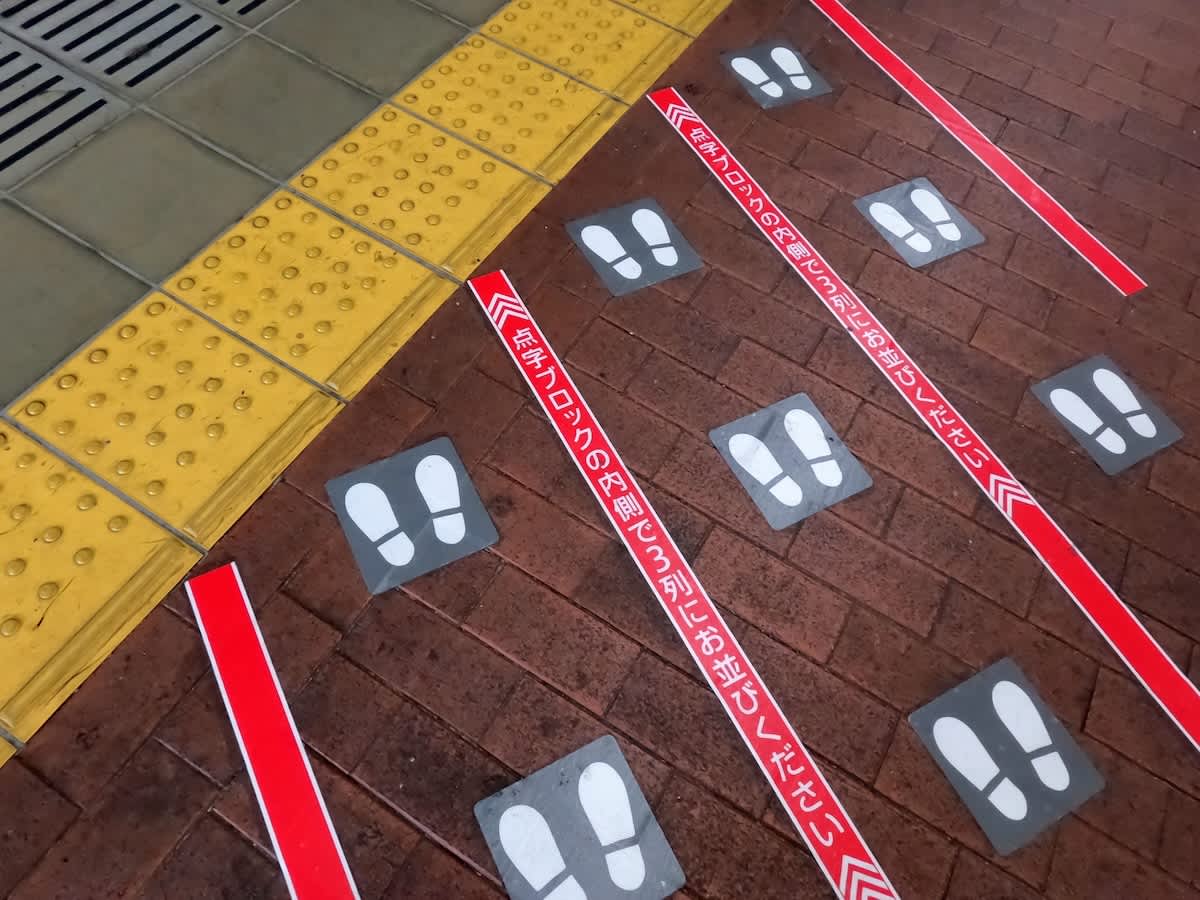
Be sure to check where to line up when waiting for public transport. There are often markings on the ground indicating where to stand. Standing where you are supposed to allows people to quickly get on and off trains and buses, which helps services run to schedule.
On trains and buses, you may notice people wearing backpacks on their front. This is regarded as good manners as it prevents inadvertently knocking other people who may be standing close behind you. As much as possible, people try to give one another sufficient space, but on crowded services, it is not always possible. You may also notice that people typically do not make phone calls or play sound from their mobile devices on public transport.
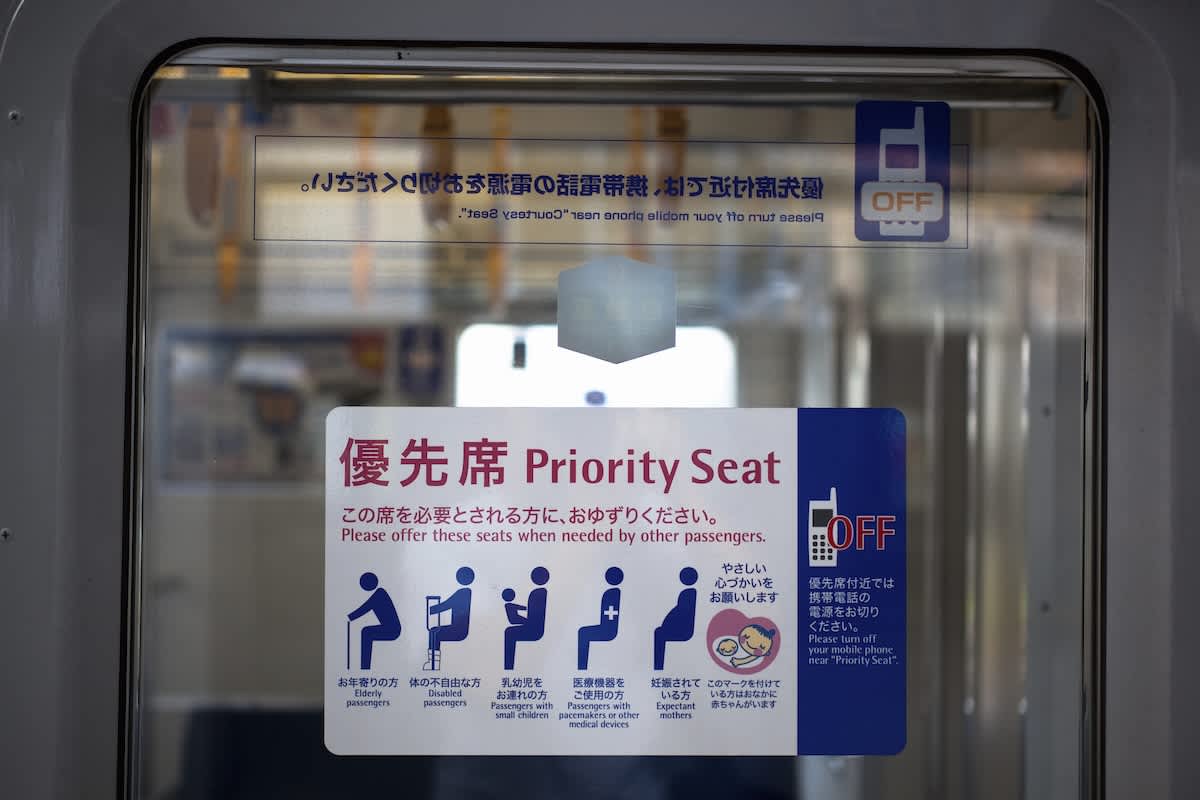
Most types of transport have priority seats for elderly passengers, pregnant women, and people with disabilities. They are marked and often colored differently from the other seats. If you notice you are inadvertently sat in one of these seats, switch seats or be prepared to offer it to someone else.
On airplanes, bullet trains (shinkansen), highway buses, and express train services, it is customary to ask the person seated behind you before reclining your chair. People typically also avoid putting their seat in full recline, especially when the person behind is using the tray table.
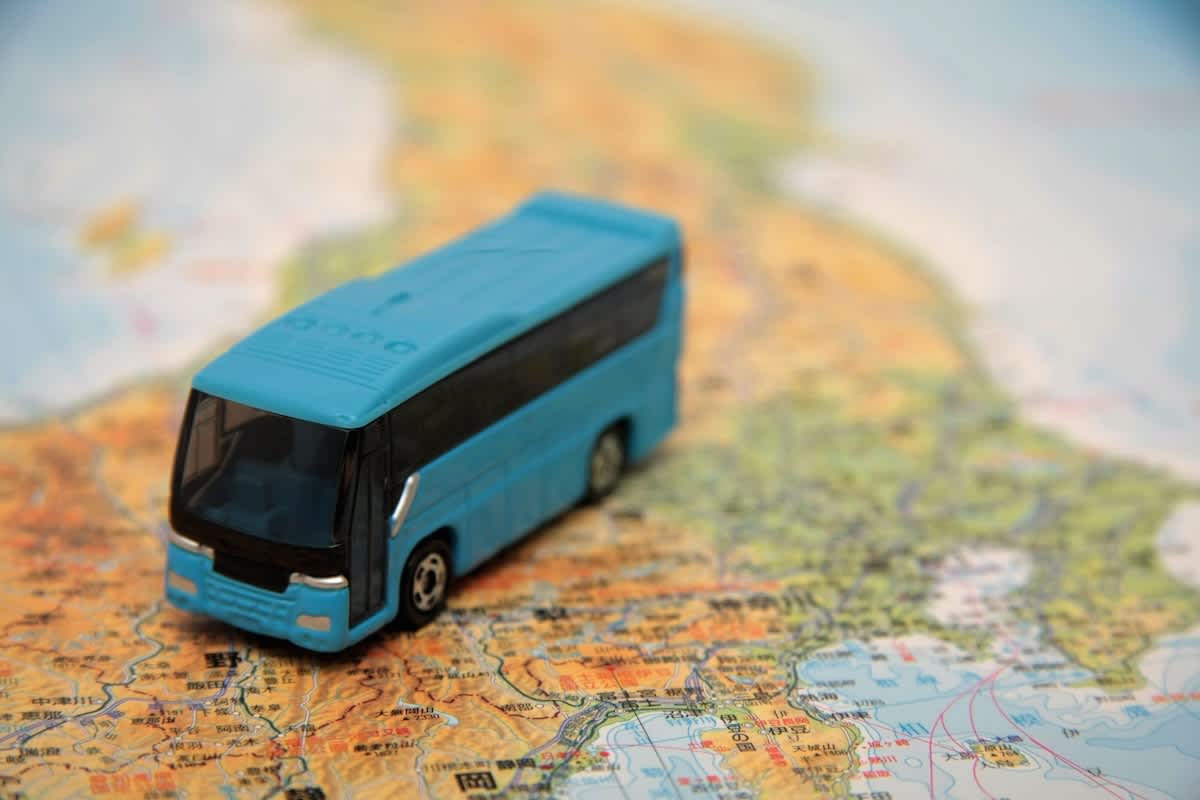
Convenience over speed or cost
Public buses and trains are reliable and reasonably priced. However, they may not always be the best option, especially if you are traveling with luggage or family, or simply want to avoid crowds. For times like these, consider taking a taxi. Though they can be more expensive, the hassle they save from figuring out routes or managing baggage is often worth it.
Taxis are often available at train stations and can be hailed on the street or with a taxi app. You can travel with up to four people in a regular taxi, and with as much luggage as fits in the trunk. If you are traveling with a larger group or have special requirements, it is possible to order specialized taxis.
Highway or shuttle buses can also be the more convenient transportation choice. While they are usually slower than rail, they sometimes offer a more direct route and can save having to change trains. Simply put your belongings in the hold, hop on, and wait to arrive at your destination. Overnight buses in particular are an underrated and surprisingly comfortable way to travel across the country.
For more information about transportation options and additional tips, check the Getting Around section of this website.
Plan in advance
Having solid plans ahead of your travel dates is key to ensuring you get where you want to go when you want to go and have a place to stay. This is especially important when making long-distance trips on bullet trains (shinkansen), express trains, highway buses, airplanes, and ferries. You not only sometimes get cheaper fares, but also stand a better chance of getting seats on the service you want. Reservations for certain services and popular seats, such as Mt. Fuji-facing window seats on Tokaido Shinkansen services, fill up quickly.
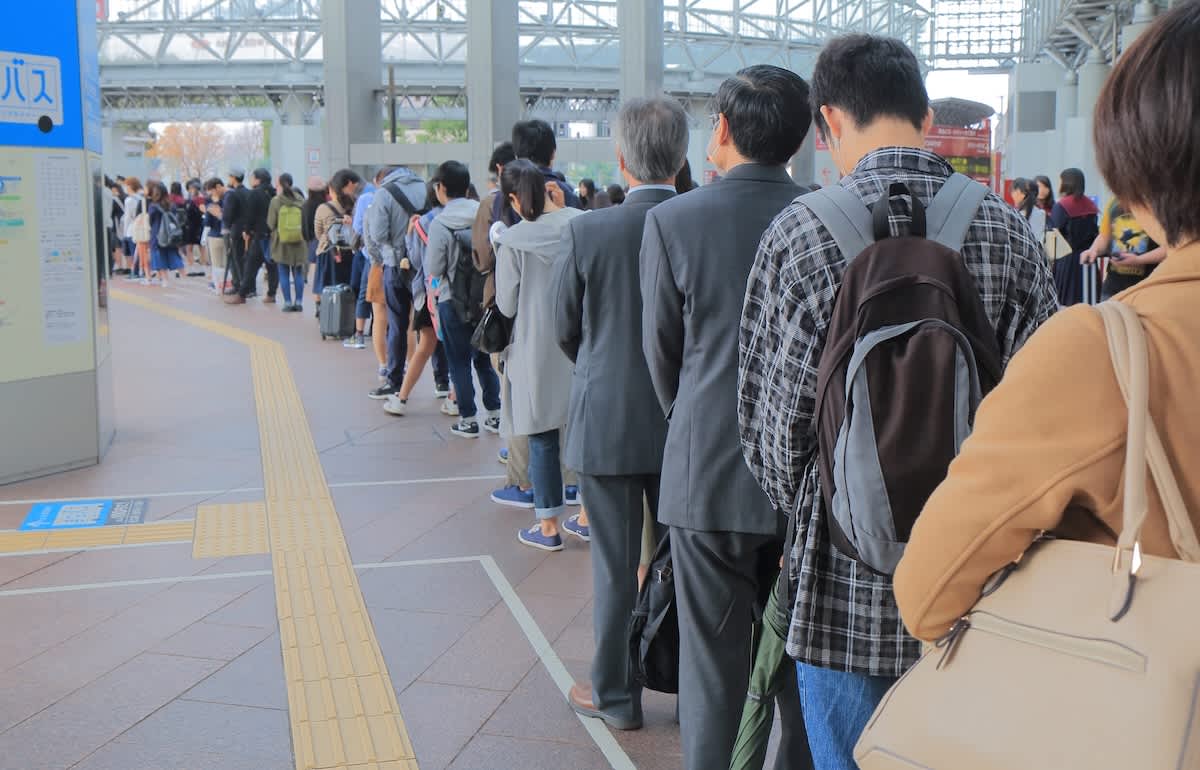
Making reservations last minute on the day of travel is best avoided for several reasons. Firstly, stations and ticket desks, especially those with foreign-language speaking staff, can be quite busy. At peak times, you might miss your intended service. Secondly, services to more remote destinations run much less frequently than bullet trains connecting Tokyo and Osaka, for example. This means that there are a limited number of available seats per day. In the worst scenario, you may be unable to secure seats to reach your accommodation.
You should also always have accommodation arranged before traveling out of the big cities, to avoid arriving somewhere to find there are no vacancies. What's more, some small accommodations may be unable to accommodate you on the day without a booking even if they have rooms available, because of staffing or other such issues. For help with reservations, you can find a list of online reservation sites here.

If you experience difficulty reaching your destination or are running late for check-in, it's customary to call the hotel to let them know, especially if your package includes meals. It is a small courtesy but can mean a lot to hotel staff and prevent any issues.
Useful apps
Here are a few suggestions for useful apps to further enhance your trip:
Ticketing apps
There are a few prepaid, rechargeable contactless electronic payment systems that enable you to use your devices as fare cards on public transportation in Japan. Popular ones like Suica and Icoca can be set up or transferred onto iPhones via the Apple Wallet app and used on trains, buses, taxis, and even to make payments at some stores. You won’t have to worry about buying tickets at train stations and will be able to breeze through the ticketing barriers.
Taxi apps
Even though Japan’s public transportation system is very reliable, it doesn't run all night, and sometimes you just need a taxi. Apps such as GO and S.Ride offer quick taxi dispatch, arrival alerts, direct messaging, and cashless payments. You can make bookings and choose specialized vehicles.
Navigation apps
Having a navigation app is essential. Google Maps, for example, works very well in Japan, and, when traveling by train, includes platform information, travel costs, and even how crowded carriages are at that time of day. Other apps include Japan Transit Planner and CityMapper.
Translation apps
From scanning menu items to having simple conversations with shopkeepers, having a translation app widens the scope of what you can experience in Japan. Google Translate is easy to use and offers photo, voice, and text translation. Simply point to whatever you need translated and take a photo, ask it to say something, or type the phrase out. VoiceTra is a speech translation app that supports over 31 languages.














